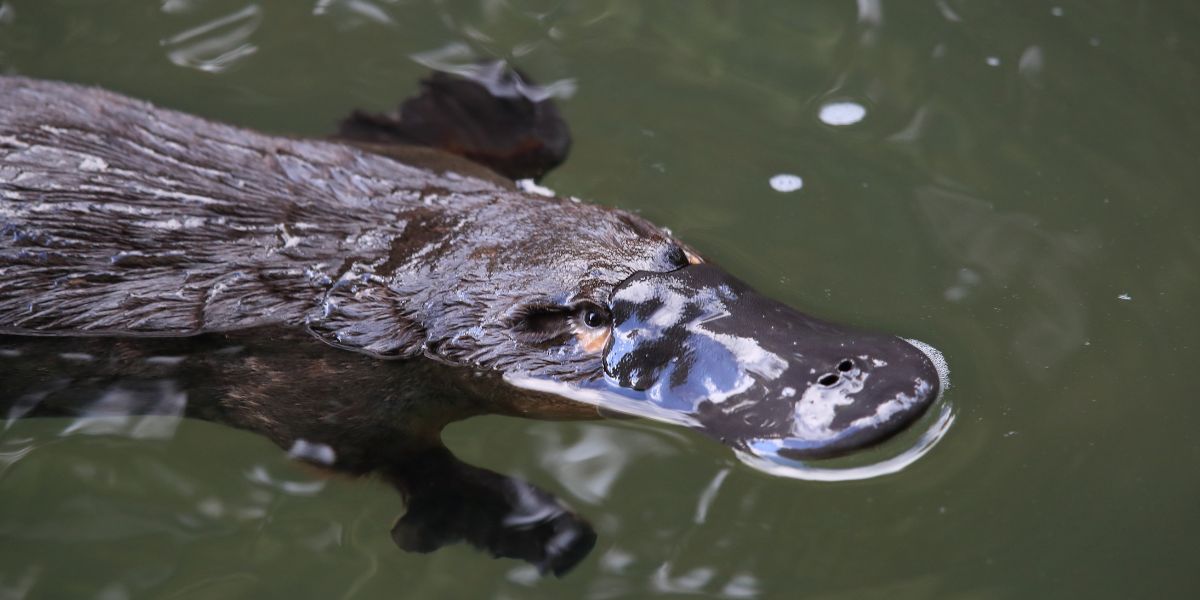
© Canva NFP
25 July 2022
Author: Tamielle Brunt, PlatypusWatch
Wildlife Queensland’s 2022 platypus environmental DNA (eDNA) survey has been one of the most important due to the major flooding events that have affected our waterways since the 2021 survey season. It is also a great milestone — we have sampled 70 waterways in seven years!
Flooding can be either beneficial or detrimental for platypuses. A slow increase of water fills the system and washes out nutrients and built-up sediment. More water means greater waterway connectivity for platypuses to move, and a depth that is safe and effective for foraging, especially, during breeding season (June–October).
A flush can also reinvigorate the habitat of aquatic insect larvae (the platypus’s main food source) as pollution and sediment reduce the number and quality of insects. A clean system encourages insect abundance and suits platypuses and their bellies!
The major concern is floodwaters within human-impacted environments. Instead of water naturally soaking into the system, it enters hard and fast off impervious concrete surfaces.
In urban areas, stormwater exacerbates water flow, which can cause:
- bank erosion, affecting burrows and nesting sites
- scouring of the substrate from the instream channel, which washes away food and can temporarily displace platypuses
- foraging difficultly, as platypuses are fighting against fast-flowing water, decreasing their chances of a good feed (especially for emerging juveniles, which may not be very strong or accustomed to rapid flows)
- inundation of burrow sites, which is devastating if there are babies (they remain in the nesting burrow until February).
These threats also occur in agricultural landscapes if there is limited native vegetation cover to stabilise a waterway’s banks or if there has been disturbance from livestock or feral animals.
Platypuses are robust and have coped with floods for centuries. However, we still need to monitor them. We have exacerbated the threats to their habitats, so we need to ensure the species is not being pushed to the point of no return.
Where are platypus populations persisting?
This year’s eDNA collaborations with three councils resulted in highlighting waterways that are strongholds for platypus populations, even after 2019’s drought, 2020’s fires, and the more recent floods. The Moreton Bay region, particularly, has had consistently positive eDNA detections over the years.
Damage from flooding was visible in the upper Caboolture River, where the flood line was above our heads and debris had been swept into trees. Melaleuca viminalis and Lomandra species had been washed over. This vegetation definitely saved the banks from erosion.
Along the Bremer River, in Ipswich, the Lomandra was holding strong whereas other shallow-rooted weeds had been inundated and died. The intact habitat along the Caboolture River, and the persistent water source, suggests platypuses will thrive in this area.

Upper Caboolture River
The difference between the upper Caboolture River, intact riparian zone and the Bremer River.

Bremer River
The Bremer River has a <10m buffer riparian zone of Lomandra and M. viminalis; following that, the weeds died after being inundation.
As we travelled south into urban areas of Moreton Bay, Burpengary Creek looked promising, with two positive detections out of four. This creek experiences several urban pressures, but the riparian vegetation is dense in pockets. This system would have benefited from a flush, as in-stream weeds were building up in some sections in 2021.
Platypus populations are also persisting in the North Pine and South Pine Rivers, despite visible signs of erosion and sedimentation in the urban areas of these catchments.

Albany Creek
Albany and Sandy Creeks are tributaries of the South Pine River that were impacted by sediment, which can smother the main food source of platypuses.

Sandy Creek
Ipswich and Logan platypus eDNA detections were scarce, which may indicate very low densities of animals or reduced detection ability due to the volume and velocity of water flowing through these systems. The eastern areas of Ipswich have always been a common area for eDNA detection and sightings. This year, three equivocal detections resulted, which means that although trace DNA was detected, it was not concentrated enough to confirm its presence. This can be due to the contamination of trace DNA.
Environmental DNA results in the Albert River, in Logan, have fluctuated over seven years, with most positive eDNA results recorded above the weir. There may be a possible disconnect due to the weir. Although there is a fish ladder that platypuses may try to use, further investigation is needed. The habitat is varied within this catchment, which experiences many different land uses. Erosion has washed away banks in some sections, which were flagged to the local council to assess for rehabilitation to reduce further damage and protect potential burrowing sites for breeding females.
Overall, the continued monitoring of platypus presence, especially in areas with equivocal results, will help us better understand their distribution in South East Queensland. Longitudinal data collected by this project is important — not only to track platypus populations over time, but also to develop and support catchment management programs to rehabilitate areas. It is promising that our seven-year project has contributed to identifying platypuses within both the Ipswich Council and Brisbane Council areas and their continuation to list the platypus as a significant species.
Preservation of platypuses will be a conservation benefit within the Greater Brisbane region, as they encourage habitat protection and increase the overall quality of the waterways in which they live.
Please remember to report your platypus sightings.
